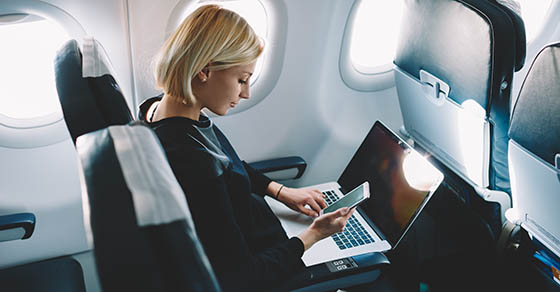If you have employees who travel for business, you know how frustrating it can be to manage reimbursements and the accompanying receipts for meals, hotels and incidentals. To make this process easier, consider using the “high-low” per diem method. Instead of tracking every receipt, your business can reimburse employees using daily rates that are predetermined by the IRS based on whether the destination is a high-cost or low-cost location. This saves time and reduces paperwork while still ensuring compliance. In Notice 2025-54, the IRS announced the high-low per diem rates that became effective October 1, 2025, and apply through September 30, 2026.
How the per diem method works
The per diem method provides fixed travel per diems rather than requiring employees to save every meal receipt or hotel bill. Employees simply need to document the time, place and business purpose of their trip. As long as reimbursements don’t exceed the applicable IRS per diem amounts, they aren’t treated as taxable income to the employee and don’t require income or payroll tax withholding.
Under the high-low method, the IRS establishes an annual flat rate for certain areas with higher costs. All locations within the continental United States that aren’t listed as “high-cost” are automatically considered “low-cost.” The high-low method may be used in lieu of the specific per diem rates for business destinations. Examples of high-cost areas include Boston and Los Angeles. But many locations are considered high-cost during only part of the year. Some of these partial-year locations are resort areas, while others are major cities where costs may be lower for, say, some of the colder months of the year, such as New York City and Chicago.
Under some circumstances — for example, if an employer provides lodging or pays the hotel directly — employees may receive a per diem reimbursement only for their meals and incidental expenses. There’s also a $5 incidental-expenses-only rate for employees who don’t pay or incur meal expenses for a calendar day (or partial day) of travel.
The new high-low per diems
For travel after September 30, 2025, the per diem rate for high-cost areas within the continental United States is $319. This consists of $233 for lodging and $86 for meals and incidental expenses. For all other areas within the continental United States, the per diem rate is $225 for travel after September 30, 2025 ($151 for lodging and $74 for meals and incidental expenses).
For travel during the last three months of 2025, employers must continue to use the same reimbursement method for an employee as they used during the first nine months of the calendar year. Also, note that per diem rates can’t be paid to individuals who own 10% or more of the business.
Revisit reimbursement methods
As the beginning of a new year approaches, it’s a good time to review how your business reimburses employees’ business travel expenses. Switching from an actual expense method to a per diem method in 2026 could save your business and your employees time and frustration. Contact us if you have questions about efficient and tax-compliant travel reimbursement methods.



